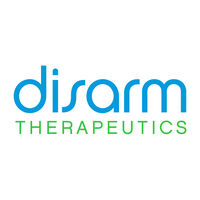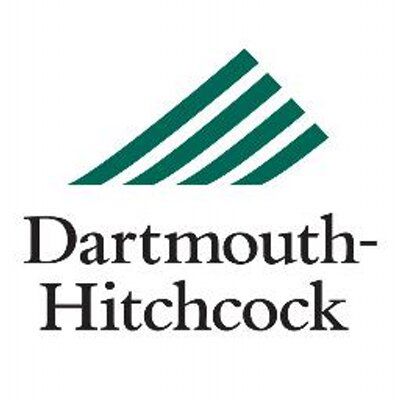预约演示
更新于:2025-12-05

Disarm Therapeutics, Inc.
更新于:2025-12-05
概览
标签
神经系统疾病
其他疾病
感染
小分子化药
噬菌体疗法
疾病领域得分
一眼洞穿机构专注的疾病领域
暂无数据
技术平台
公司药物应用最多的技术
暂无数据
靶点
公司最常开发的靶点
暂无数据
| 排名前五的药物类型 | 数量 |
|---|---|
| 小分子化药 | 1 |
| 噬菌体疗法 | 1 |
关联
2
项与 Disarm Therapeutics, Inc. 相关的药物靶点- |
作用机制 细胞死亡刺激剂 |
非在研适应症- |
最高研发阶段临床1/2期 |
首次获批国家/地区- |
首次获批日期- |
靶点 |
作用机制 SARM1抑制剂 |
在研机构 |
原研机构 |
在研适应症 |
非在研适应症- |
最高研发阶段临床1期 |
首次获批国家/地区- |
首次获批日期- |
2
项与 Disarm Therapeutics, Inc. 相关的临床试验NCT03997981
Chemotherapy Induced Peripheral Neuropathy Natural History Study (EPIPHANY)
This is a prospective natural history study of CIPN in approximately 200 participants receiving taxanes (paclitaxel, docetaxel) for breast cancer, bortezomib for multiple myeloma, oxaliplatin-based regimens for colorectal cancer, or vincristine for lymphoma.. Demographic data, medical history, electronic PROs, ClinROs blood biomarkers including NF-L, PGx DNA analyses and Bedside-QST will be assessed at Baseline. The Observation Period will initiate with the first dose of chemotherapy and conclude with the last dose of chemotherapy. During the Observation Period, participants will be evaluated for the development of CIPN using PROs and ClinROs. Blood biomarkers and Bedside-QST will be measured at various timepoints corresponding with treatment regimen schedules throughout the observation period. The Post Chemotherapy Follow-up Period will begin with the first visit after the last dose of chemotherapy and conclude 6 months after the last dose of chemotherapy. During the Post Chemotherapy Follow-up Period, participants will be evaluated for CIPN using PROs and ClinROs. Blood biomarkers and Bedside-QST will also be measured at the beginning and at the end of the Post-Chemotherapy Follow-up Period. PROs will be assessed electronically on a monthly basis.
开始日期2019-07-03 |
申办/合作机构 |
NCT03348956
Biomarkers in Chemotherapy-Induced Peripheral Neurotoxicity: Better Tools and Understanding
This pilot study will attempt to establish the feasibility of using tissue oxygen measurements and the protein, neurofilament light chain (NF-L), as potential biomarkers for chemotherapy-induced peripheral neuropathy (CIPN). Thirty (30) subjects scheduled to begin taxane-based chemotherapy for breast tumor will be assigned to receive an India ink injection under the skin of the foot. The ink will be used to make up to five (5) 45-minute "electron paramagnetic resonance" (EPR) oximetry readings prior to the start of chemotherapy. Subjects will undergo electrophysiologic assessments including nerve conduction studies, in addition to a neurological examination prior to the start of chemotherapy. Subjects will have the EPR oximetry readings, electrophysiologic tests, and neurological examination two more times: at the halfway point of their chemotherapy treatment -- or at the onset of CIPN symptoms -- and again after chemotherapy has been completed. Subjects will also have blood drawn prior to beginning taxane-based chemotherapy, prior to every scheduled chemotherapy treatment, and after completion of chemotherapy in order to test for neurofilament light chain (NF-L).
开始日期2018-03-01 |
申办/合作机构 |
100 项与 Disarm Therapeutics, Inc. 相关的临床结果
登录后查看更多信息
0 项与 Disarm Therapeutics, Inc. 相关的专利(医药)
登录后查看更多信息
16
项与 Disarm Therapeutics, Inc. 相关的新闻(医药)2025-10-20
·生物世界
当全球老龄化浪潮席卷而来,当慢性疾病负担日益加剧,当人类对“健康寿命”的追求超越“生存年限”,一个以细胞能量工厂为核心的医学新纪元正在悄然开启——线粒体医学,正从实验室走向临床,从概念走向产业,成为重塑未来健康图景的关键力量。为全面梳理线粒体医学在全球范围内的发展脉络、技术突破与市场机遇,弗若斯特沙利文 (Frost & Sullivan,简称“沙利文”)从技术研发进展、临床应用范围、市场规模及增长趋势等方面深入调研、系统分析,撰写并于 2025 年 10 月全球发布《2025线粒体医学行业发展现状与未来趋势白皮书》(以下简称“《白皮书》”)。该白皮书旨在助力市场各方深入洞察线粒体医学行业环境,明晰竞争格局,挖掘新兴市场机遇,促进资源整合与协同创新。
线粒体定义及其作用:
线粒体作为细胞的“能量工厂”,通过氧化磷酸化合成约 95% 的细胞所需能量,还参与脂肪酸代谢、钙离子稳态调控等多种关键生物学过程。 其中,NAD⁺(烟酰胺腺嘌呤二核苷酸,辅酶I) 是线粒体功能核心分子:既是三羧酸循环、氧化磷酸化的必需辅酶,直接参与 ATP 生成;也是 Sirtuins 家族去乙酰化酶的关键底物,负责调控线粒体稳态、DNA修复等生理过程,深刻影响细胞衰老与疾病。年龄增长或病理状态下,细胞内 NAD⁺ 每 20 年下降约 50%,会导致线粒体能量代谢降低、活性氧(ROS)清除减弱,引起线粒体功能障碍。线粒体功能障碍则会导致细胞能量代谢紊乱、活性氧过度产生等,与衰老及心血管疾病、神经退行性疾病等多种疾病密切相关。
线粒体医学定义:
线粒体医学是一门新兴交叉医学领域,通过深入理解线粒体的生理功能、病理机制以及其在疾病发生及发展中的作用,为疾病的诊断、预防和治疗提供新的策略和方法。迄今为止,人类已知的多种疾病发生均与线粒体健康受损存在关联,这种关联既可能表现为线粒体原发性功能障碍直接致病,也可能体现为疾病进程中伴随的线粒体继发性损伤。这一明确关联使得线粒体医学成为推动预测性、预防性与个性化医疗目标实现的核心工具,助力医疗体系从传统低效的被动应对模式,向风险预判、精准预防及个体化治疗方案定制转型。
图:线粒体功能障碍衰老机制
文献来源:Radovic, M., Gartzke, L. P., Wink, S. E., van der Kleij, J. A., Politiek, F. A., & Krenning, G. (2025). Targeting the Electron Transport System for Enhanced Longevity. Biomolecules, 15(5), 614. https://doi.org/10.3390/biom15050614
线粒体医学的发展历史:
线粒体医学的发展历经百余年科学沉淀。19 世纪末线粒体被发现并命名,20 世纪中期“线粒体疾病”概念确立,2013 年《Cell》期刊将“线粒体功能障碍”(Mitochondrial dysfunction)列为衰老的九大标志物之一,推动其研究从狭义的线粒体 DNA 遗传病拓展至广义的与线粒体功能障碍相关的疾病谱系。
线粒体医学的关键技术:
线粒体医学的关键技术不断突破,包括线粒体分离与纯化、基因检测、多组学技术、生物标志物检测、基因治疗和细胞治疗等。这些技术为线粒体功能的研究、疾病的诊断和治疗提供了重要支撑。
《白皮书》从广义到狭义对线粒体医学概念进行了详细介绍,更多详细内容可参见完整版报告。
人口老龄化催生巨大需求:
全球及中国人口老龄化趋势显著。2024 年全球 65 岁以上人口达 8.2 亿,预计 2030 年将增至 9.9 亿;中国 65 岁及以上人口 2024 年为 2.2 亿,占总人口约 15.8%,预计 2030 年达 2.7 亿。
图:全球人口老龄化趋势,2019-2030E
图:中国人口老龄化趋势,2019-2030E
图:中国1949年以来出生人口数
全球与中国人口结构正经历深刻变革,少子化与老龄化已成为不可逆转的长期趋势。在这一背景下,单纯的寿命延长已不足以满足社会需求,人们的健康观念正经历着从追求“活得久”到追求“活得好”的转变。相比寿命长度的延展,如何在更长的时间里保持身体机能、认知能力与生活质量,已逐渐成为社会需求的焦点。线粒体医学通过针对细胞能量工厂和衰老核心机制进行早期评估和精准干预,成为解决健康老龄化问题的关键,市场需求持续增长。
政策体系为行业保驾护航:
中国高度重视人口老龄化及相关产业发展,中共二十大将“积极应对人口老龄化”上升为国家战略,国务院办公厅发布《关于发展银发经济增进老年人福祉的意见》,2025 年《政府工作报告》进一步强调 “大力发展银发经济”。政策在战略布局、科技支撑、服务优化、财政保障等方面形成完善支持体系,鼓励基因技术、再生医学等在抗衰老领域的应用,推动老年健康产业发展,为线粒体医学的创新研发和市场拓展提供坚实政策基础。
近年来,线粒体研究持续成为国家自然科学基金资助的热点领域,中标项目数量呈现显著且稳定的增长态势,近四年更是稳居所有医学研究方向的前三甲,充分印证了其当前在基础生命科学与医学研究中的核心地位。当前的研究热点高度聚焦于深入解析线粒体在细胞稳态与疾病发生中的复杂作用机制,主要涵盖五大方向:线粒体生物学、线粒体与疾病关联、线粒体动力学、线粒体质量控制、线粒体与衰老调控。
图:2020-2023 年国家自然科学基金线粒体相关项目年度结题数
《白皮书》深入分析了全球老龄化趋势下线粒体医学的发展机遇,以及中国政府在老年健康产业方面的战略布局和政策支持,更多详细内容可参见完整版报告。
线粒体医学行业疾病负担:
线粒体功能障碍与多种疾病相关,包括心血管疾病、神经退行性疾病、代谢性疾病、生殖系统疾病等。
图:线粒体功能障碍在衰老相关疾病中的核心作用
文献来源:Lima, T., Li, T. Y., Mottis, A., & Auwerx, J. (2022). Pleiotropic effects of mitochondria in aging. Nature aging, 2(3), 199–213. https://doi.org/10.1038/s43587-022-00191-2
心血管疾病:在心血管疾病中, NAD⁺ 通过调节代谢、维持氧化还原稳态和调控免疫反应,对心血管疾病发挥有益作用。NAD⁺ 辅酶在糖酵解、脂肪酸β-氧化及三羧酸(TCA)循环过程中被还原为 NADH。其可通过 SIRT1/PGC1α 通路调控线粒体生物合成,并通过 SIRT1/AMPK/HIF 通路增强自噬作用。这些代谢调控作用使 NAD⁺ 在心血管疾病治疗领域具备应用潜力。NAD⁺ 与 NADH 的平衡是细胞氧化还原状态的核心要素。NAD⁺ 可通过激活 SIRTs 调控 FOXOs、NRF2、SOD 及 GSH 的表达,进而发挥抗氧化作用,缓解心血管疾病中的氧化应激损伤。此外,NAD⁺ 还能抑制中枢免疫通路并调节T细胞稳态,从而产生免疫调节效应,这为其在心血管疾病治疗中的应用提供了潜在价值。
免疫衰老:线粒体功能障碍也是免疫衰老的关键分子机制之一,其核心在于线粒体 DNA(mtDNA)损伤与氧化应激的累积。随着年龄增长,线粒体呼吸链效率下降、活性氧(ROS)生成增加,导致 mtDNA 结构不稳定并发生突变。受损的 mtDNA 释放至胞质后作为损伤相关分子模式(DAMPs),激活 cGAS–STING 信号通路,诱导衰老相关分泌表型(SASP)因子(例如 IL-1β、IFN-β)的产生,从而形成慢性低度炎症状态。同时,过量 ROS 不仅进一步损伤线粒体本身,还会氧化免疫受体及转录因子(例如 TLR4、NF-κB),放大炎症信号并削弱免疫应答。
神经退行性疾病:近年来研究表明,线粒体功能障碍还是贯穿多种神经退行性疾病发生发展的关键枢纽。随着年龄增长,脑组织中 NAD⁺ 水平显著下降,导致线粒体生物合成减少、自噬/线粒体自噬受损、电子传递链功能异常以及活性氧(ROS)过度生成。这些变化进一步引起氧化损伤大分子积累、钙稳态失衡和能量危机,加速神经退行性病变进程。值得注意的是,NAD⁺ 代谢异常还可通过激活 SARM1(Sterile Alpha and TIR Motif Containing 1)基因介导的轴突变性途径加剧神经退行性过程。SARM1 是介导轴突退化的核心分子开关,其激活依赖于 NMN/NAD⁺ 比例失衡,并通过水解 NAD⁺ 直接导致轴突能量衰竭和变性。 因此,靶向线粒体功能及 SARM1 相关通路调控——特别是通过恢复 NAD⁺ 水平以增强线粒体质量控制、抑制轴突变性——已成为干预神经退行性疾病的重要策略,也为开发跨疾病、共性的神经保护疗法提供了新思路。
代谢性疾病:在 2 型糖尿病和非酒精性脂肪肝等代谢性疾病中,线粒体功能紊乱表现为脂肪酸氧化异常、胰岛素抵抗和肝细胞脂质积累。线粒体 ROS 生成增加进一步加剧炎症反应和组织损伤。恢复线粒体生源和能量代谢平衡被认为是改善糖脂代谢的有效策略。以长海医院内分泌科的研究为例,在动物模型中,与正常小鼠相比,患有糖尿病的 db/db 小鼠的骨髓和源自骨髓的内皮祖细胞(EPCs)中的 NAD⁺ 浓度和 NAMPT 表达显著降低。该类的 EPCs 数量减少与功能障碍,与糖尿病患者血管修复能力下降、缺血组织血流再灌注不佳密切相关。在当研究人员通过补充 NAD⁺ 前体物质来增强 NAD⁺ 库时,EPCs 内的 NAD⁺ 浓度和血液中 EPCs 的数量皆增加了。这不仅改善了糖尿病小鼠在后肢缺血模型中的伤口愈合和血液再灌注情况,还挽救了骨髓中一些重要蛋白质(例如 SDF-1α和eNOS)水平的下降。该研究的人体临床试验进一步发现,源自 2 型糖尿病(T2DM)患者的 EPCs 内的 NAD⁺ 含量,显著低于源自健康人群的 EPCs 内的 NAD⁺ 含量
生殖系统疾病:卵巢衰老的因素包括表观遗传变化、氧化应激、线粒体 DNA 突变、炎症、细胞凋亡、线粒体功能障碍等,其中,靶向线粒体功能障碍已成为预防卵巢衰老的重要途径,创新性治疗手段靶向改善线粒体功能极具潜力,包括抗氧化剂应用、代谢功能改善、生物合成促进、线粒体自噬增强、线粒体替代疗法(MRT)以及中医药(TCM)治疗等。近年来,线粒体替代疗法为解决女性生殖力障碍提供了潜在突破口。通过向卵母细胞注入高质量线粒体,可有效提升其代谢状态与胚胎发育潜力,尤其适用于高龄或反复试管失败的患者,该技术已在辅助生殖领域展现出积极前景。此外,有研究发现,直接补充 NAD⁺ 可以显著改善老年动物的卵母细胞质量,增强卵巢功能,恢复其生育能力。中国医学科学院的研究团队在 Immunity&Ageing 期刊上发表的研究也表明,通过 NAD⁺ 代谢,可对胚胎发育产生有益影响,最终逆转卵巢衰老。补充 NAD⁺ 在改善男性不孕症上也具有潜力。研究发现,提升 NAD⁺ 水平,可以维持肌肉力量、骨骼健康和性功能正常运作,有效提升睾酮水平;帮助平滑肌细胞舒张,改善勃起功能;通过抗氧化作用减少精子氧化损伤,保护精子 DNA 完整性,提升精子质量、精子生成,有效提高男性生殖健康。
年龄相关眼科疾病:年龄相关性黄斑变性(AMD)和白内障等眼科疾病与视网膜细胞线粒体功能退化密切相关。光感受器细胞的高能量需求使它们易受氧化损伤和线粒体 DNA 突变影响。根据《视觉系统衰老的生物标志物共识》,NAD⁺ 在视网膜线粒体的氧化磷酸化过程中发挥着重要作用,帮助产生 ATP,以满足眼睛在光暴露下的高能量需求。随着年龄的增长,NAD⁺ 水平逐渐下降,这一变化与烟酰胺磷酸核糖转移酶(NAMPT)表达的减少同步发生。研究表明,多种化合物如人源肽(Humanin)、白藜芦醇(Resveratrol)、自噬增强剂(AMPK激活剂)、NAD⁺ 等,通过改善线粒体生物能量学、减少氧化应激、激活抗氧化基因表达等机制,显示出对视网膜色素上皮(RPE)细胞保护作用。这些化合物在临床前研究中显示出减缓 RPE 细胞衰老和 AMD 进展的潜力,为未来的治疗提供了新的方向。此外,调节 NAMPT 和 NAD⁺ 生物合成途径的治疗手段,在 RPE 细胞衰老方面也展现出积极效果。保护线粒体功能、减少氧化损伤已成为延缓视力丧失的重要干预途径。
《白皮书》详细探讨了线粒体功能障碍作为多种衰老相关慢性疾病的核心病理机制,涵盖了心血管疾病、神经退行性疾病、代谢性疾病、生殖系统疾病以及年龄相关眼科疾病等多个领域。书中分析了线粒体功能障碍与各适应症之间的具体关联,并阐述了通过改善线粒体功能来缓解或治疗这些适应症的潜力。更多详细内容可参见完整版报告。
线粒体医学终端需求分析:
线粒体功能障碍引发的健康问题广泛,从显性线粒体疾病到隐性亚健康状态,构成了一个多层次、广谱系的市场需求。显性线粒体疾病包括原发性遗传性线粒体病和伴随继发性线粒体功能障碍的慢性病,如神经退行性疾病、代谢性疾病、心血管疾病及年龄相关性功能衰退等,这些疾病与线粒体能量代谢异常、氧化应激、钙稳态失衡等机制密切相关,使得线粒体成为重要的干预靶点。隐性亚健康状态与抗衰老需求日益增长,尤其是在中青年人群中,他们关注长期慢性疲劳、精力不济、代谢迟缓等与轻度或早期线粒体功能失调相关的问题,这些问题虽未达疾病诊断标准,但已显著影响生活质量,催生了巨大的健康管理和早期干预需求。医疗场景中,线粒体医学在心血管、神经系统等领域展现出巨大潜力;健康消费场景则聚焦精准干预与机能提升,满足消费者多样化需求。
线粒体医学在健康消费领域的应用专注于亚健康状态的主动预防和机能提升,满足消费者对提升精力、抗疲劳、延缓衰老和改善代谢的需求。其核心价值在于将抗衰老从传统的外部修饰和泛泛补充,升级为靶向细胞能量工厂的精准干预。研究表明,抗衰老需求具有显著的年龄分层特征,35 岁是抗衰老意识觉醒的关键转折点,不同年龄段人群的核心诉求与干预手段存在差异。
中国抗衰老消费市场正在快速增长,消费者健康意识全球领先。Z 世代抗老产品消费增速显著,中年群体已成为抗衰消费的主力军,银发群体的健康消费潜力也在快速释放。线粒体医学通过精准检测、个性化产品与动态监测的闭环服务,有望推动健康消费从“泛泛补充”到“精准干预”的全面升级,为分龄抗衰需求提供科学、系统且可量化的解决方案,契合当前健康消费市场精细化、科学化的发展趋势。
《白皮书》分析了线粒体医学在终端需求市场的应用,涵盖从显性疾病到亚健康状态的广泛健康问题,并探讨了其在医疗和健康消费领域的潜力。更多详细内容可参见完整版报告。
线粒体医学行业生态链:
行业生态链涵盖“检测-干预/治疗-再检测”闭环。检测环节通过基因、代谢功能及标志物检测实现精准诊断;干预治疗包括线粒体营养干预、药物治疗、线粒体移植等多样化方式;再检测则用于优化个性化治疗方案,共同构成完整的线粒体医学服务体系。
检测:
NAD⁺ 检测:NAD⁺ 是一种在生物体内广泛存在的辅酶,在细胞代谢中扮演着至关重要的角色,在必需的细胞过程中消耗,须不断补充以维持体内平衡。每 20 年,NAD⁺ 水平下降高达 50%,尤其是在代谢活跃的组织中。随着 NAD⁺ 含量因年龄增长和疾病发生逐年下降,NAD⁺ 平衡遭到破坏,导致衰老相关疾病发生进展。因此,NAD⁺ 检测已成为评估线粒体能量代谢和健康状态的重要工具。
表:NAD⁺ 检测方法对比与适用性分析
Sirtuins 检测:Sirtuins 蛋白家族是 NAD⁺ 依赖的去乙酰化酶,作为线粒体功能的重要调控者,不仅深度参与细胞的转录调控与代谢等重要生理过程,还与衰老及神经退行性疾病、癌症、心脑血管疾病等密切相关。目前,常用的 Sirtuin 活性检测手段包括质谱法、高效液相色谱法与荧光法。
图:SIRT1 ELISA试剂盒原理
ATP 检测:ATP(三磷酸腺苷)是细胞内的主要能量货币,其水平是衡量线粒体功能的重要指标。目前常用的 ATP 检测方法为荧光素酶法,该方法依赖荧光素酶在ATP存在下催化荧光素氧化反应,生成与 ATP 浓度成正比的荧光信号。借助高灵敏度的荧光检测设备,可对细胞内 ATP 含量进行定量分析,从而评估线粒体的能量代谢状态。该方法已广泛应用于心力衰竭、糖尿病等能量代谢相关疾病的研究,能够为疾病的诊断与动态监测提供重要依据。
甲基化检测:DNA 甲基化是表观遗传修饰的一种,与线粒体功能障碍密切相关。研究发现,线粒体 DNA 的甲基化水平会影响其转录和复制过程,进而影响线粒体的功能。甲基化检测通常采用亚硫酸盐测序法或甲基化特异性 PCR 等技术,通过分析线粒体 DNA 特定区域的甲基化状态,可以评估线粒体的功能障碍程度。例如,在某些神经退行性疾病和肌肉疾病中,线粒体 DNA 的甲基化异常是一个重要的病理特征,甲基化检测为这些疾病的早期诊断和发病机制研究提供了新的视角。
干预:
在干预方面,线粒体医学提供了多种创新的治疗手段。首先,可以通过营养补充剂进行预防及干预,维持线粒体健康。
若线粒体受损,药物治疗如 NAD⁺ 创新药、线粒体靶向抗氧化剂等药品也已广泛应用于临床。NAD⁺ 抗衰老:NAD⁺(注射用辅酶I)通过直接补充外源性 NAD⁺,能够快速提升细胞内的 NAD⁺ 水平,进而激活 TCA 循环、Sirtuins 等去乙酰化酶活性,抑制 SARM1 活性,调节细胞能量代谢及 ATP 合成,减少衰老相关的炎症反应和 DNA 损伤,从而发挥抗衰老作用,干预衰老相关疾病。
NAD⁺ 抗心衰:NAD⁺ 补充剂通过改善心肌细胞的线粒体功能,促进能量代谢,提高 ATP 合成效率,有助于恢复心肌细胞的收缩功能,减轻心肌损伤,从而改善心功能,降低心衰风险。NAD⁺ 抗免疫衰老:NAD⁺ 补充剂能够提高白细胞水平,改善巨噬细胞功能,克服免疫治疗耐药性,防治免疫衰老。NAD⁺ 抗卵巢功能衰退:NAD⁺ 能够调节卵巢细胞的线粒体功能和能量代谢,为卵母细胞的成熟和早期胚胎发育提供充足能量,改善卵巢的微环境,从而提高卵巢储备功能,延缓卵巢功能衰退。NAD⁺ 抗神经功能衰退:NAD⁺ 能改善神经退行性疾病中受损的线粒体功能,保障神经元能量供应;同时,作为 Sirtuins 家族、SARM1 的必需底物,可激活 SIRT1、SIRT3 等抑制神经炎症、修复 DNA 损伤、减少 tau 蛋白异常磷酸化等;NAD⁺ 还能通过增强抗氧化能力,抑制神经元凋亡,促进神经营养因子表达以维持突触功能,从而延缓相关疾病的神经元退行性变进程。
目前,康诺生物的恩艾地®(注射用辅酶I)是全球唯一获批的 NAD⁺ 药品。在严肃医疗方面,适用于白细胞减少、冠心病、心肌炎等疾病的治疗。同时,该产品在健康消费领域也具有广泛应用,为一类抗衰药物,用于预防血管衰老、大脑衰老、免疫衰老、生殖辅助(例如卵巢衰老、少弱精症)、慢性疲劳综合征等。
此外,新兴治疗方式如线粒体移植技术通过直接向病变细胞移植健康的线粒体,重构细胞的能量代谢与生存能力,为传统治疗无效的疾病提供新的解决方案。
图:线粒体移植技术发展历史
《白皮书》强调了线粒体医学行业生态链中“检测-干预/治疗-再检测”闭环的重要性。这一闭环通过精准诊断、个性化治疗和效果评估,为线粒体相关疾病提供了全面管理方案,是提升治疗效果和患者生活质量的关键,更多详细内容可参见完整版报告。
在生命科学的前沿领域,线粒体医学正以前所未有的速度推动人类对疾病治疗与健康管理的认知边界。作为细胞的“能量工厂”,线粒体不仅关乎生命的活力,更与众多难治性疾病的根源密切相关。全球范围内,一批创新企业正通过突破性的科学研究与技术开发,将线粒体生物学的基础发现转化为具有临床意义的疗法与产品,为神经退行性疾病、遗传性线粒体病、衰老相关疾病等领域带来新的希望。本章节将聚焦于全球线粒体医学领域的关键参与者,它们凭借独特的技术平台与研发策略,共同勾勒出这一领域的创新图景与发展趋势。
Jinfiniti:
Jinfiniti 成立于 2018 年,总部位于美国佐治亚州奥古斯塔,是一家专注于精准医学研究的公司。公司致力于通过开发和分析独特且可操作的生物标志物,配合临床验证的干预措施,帮助人们纠正亚健康问题、预防与年龄相关的疾病,延长健康寿命。其核心产品Intracellular NAD® Test 是 Jinfiniti 在 2019 年推出的家用 NAD⁺ 测试。
Niagen Bioscience:
Niagen Bioscience 成立于 1999 年,总部位于美国加利福尼亚州洛杉矶,是一家专注于健康老龄化的全球性生物科学公司。公司以 NAD⁺ 研究为核心,致力于开发线粒体营养素,通过提升 NAD⁺ 水平来支持线粒体功能和细胞能量代谢,进而延缓衰老并改善健康。其专利成分 Niagen®(烟酰胺核苷,NR)是 NAD⁺ 前体之一,已被证明能有效提升体内 NAD⁺ 水平,从而增强线粒体功能。
Stealth Biotherapeutics:
Stealth Biotherapeutics 成立于 2006 年,总部位于美国波士顿,是线粒体医学领域的先锋企业之一。Stealth 专注于开发针对线粒体功能障碍的创新疗法,致力于通过修复线粒体结构来恢复其正常功能,从而治疗一系列相关疾病。2025 年 9 月 19 日,FDA 加速批准了 Stealth 公司的新药 Elamipretide 上市。
Metro Biotech:
Metro International Biotech 成立于 2013 年,致力于开发和研究 NAD⁺ 前体化合物,以应对与年龄相关的 NAD⁺ 水平下降问题。该公司拥有 NAD⁺ 前体化合物专利组合,旨在通过提升 NAD⁺ 水平来维持健康和正常的代谢功能。其核心产品 MIB-626 (NMN为主要成分的混合物)是一种 NAD⁺ 补充剂。
Nura Bio:
Nura Bio 成立于 2018 年,是一家专注于开发神经保护疗法的生物制药公司,致力于应对神经系统疾病领域未被满足的医疗需求。它通过靶向轴突变性和神经免疫调节等关键病理过程,探索神经退行性疾病的治疗新路径。Nura Bio 重点关注 SARM1 酶(一种 NAD⁺ 水解酶),该酶被发现在触发轴突破坏(Wallerian变性)中发挥核心作用。Nura Bio 的领先候选药物是 NB-4746,它是一种脑渗透性 SARM1 抑制剂,已被证明可以预防轴突退化,并在多种神经损伤和疾病的临床前模型中提供神经保护。
Disarm Therapeutics:
Disarm Therapeutics 是一家曾专注于开发神经保护疗法的生物技术公司,由生物技术风险投资公司 Atlas Venture 成立,其核心技术源于圣路易斯华盛顿大学关于 SARM1 蛋白在轴突变性中关键作用的研究。
Cellvie:
Cellvie 是一家位于美国德克萨斯州休斯顿的生物技术公司,成立于 2018 年,专注于开发治疗性线粒体移植疗法。公司利用其专有的制备和递送技术,将健康的线粒体直接移植到受损细胞中,与细胞原有的线粒体融合,恢复能量代谢,从而治疗疾病。
Minovia Therapeutics:
Minovia Therapeutics 是一家总部位于以色列的临床阶段生物技术公司,成立于 2011 年。Minovia 专注于开发线粒体细胞疗法,其核心技术是线粒体移植。通过其专有的线粒体增强技术(Mitochondrial Augmentation Technology,MAT)平台,为线粒体功能障碍相关疾病的患者提供变革性的治疗方法。
艾美斐生物:
艾美斐生物医药科技有限公司成立于 2016 年,是一家专注于研发针对恶性肿瘤、自身免疫性疾病、代谢性疾病和神经退行性疾病等重大疾病的全球小分子或大分子创新药的临床阶段生物制药公司。艾美斐生物在研的线粒体相关药物 IPG8294 是一款靶向 NAD⁺水解酶的小分子抑制剂,通过上调 NAD⁺,全方位纠正神经元线粒体功能缺陷,抑制神经突触丢失,改善认知功能,于 2024 年获得美国 FDA 临床试验批准。
康诺生物:
康诺生物制药股份有限公司成立于 2017 年,是一家以线粒体医学与健康产品研发、生产和销售为主营业务的高新技术生物制药企业。企业以“AI + 合成生物学”驱动线粒体医学产业全链条发展,专注于 NAD⁺ 抗衰老、NAD⁺ 数字管理和线粒体医学研究。
康诺生物围绕线粒体医学价值链在医疗及健康消费市场进行多维度布局,构建了“检测-干预-再检测”业务闭环生态,在衰老和衰老相关疾病领域,形成了从疾病治疗到健康管理的全周期服务。凭借全球领先的衰老标志检测技术、全球唯一获批上市的 NAD⁺ 药品——恩艾地®(注射用辅酶I)及靶向调节 NAD⁺ 代谢抗衰老的创新药管线、线粒体移植技术和基于 AI 的“数据-反馈-优化”个性化抗衰老闭环管理,推动抗衰老及相关疾病干预走向精准化与普惠化。
目前,全球唯一获批上市的 NAD⁺ 药物恩艾地®已实现规模化商业落地,在医疗领域,恩艾地®主要用于心血管疾病、肿瘤,如冠心病、心肌炎、白细胞减少等治疗。在健康消费领域,适用于长寿医学和功能医学,为一类抗衰老药物,可用于预防血管衰老、免疫衰老、大脑衰老、生殖衰老(例如卵巢衰老、少弱精症)、慢性疲劳综合征等。康诺生物的靶向调节 NAD⁺ 代谢的抗衰老系列创新药陆续进入临床试验阶段。例如 2023 年,靶向调节 Sirtuins 的 KN-19ND-L1 心力衰竭适应症已获批临床(IND),2025 年 6 月进入临床试验 II 期阶段;已开展全球首个外周血管疾病线粒体移植临床试验;已完成靶向调节 NAD⁺ 代谢的系列创新药在心肌梗死、血管性痴呆、阿尔兹海默病、免疫耐受创新布局,在临床前研究中展现良好的药效。
《白皮书》对线粒体医学领域部分公司进行介绍,包括公司介绍、发展历程、核心技术及在研管线等,更多详细内容可参见完整版报告。
全球发展趋势:技术突破与规范化并行
全球线粒体医学领域技术不断突破,线粒体移植、基因治疗、细胞治疗等前沿技术临床应用范围持续拓展,人工智能和机器学习在疾病诊断与治疗中的应用日益广泛,推动行业向精准化、高效化发展。同时,市场竞争加剧促使企业重视技术创新与产品质量,各国政府加强监管以保障患者安全和市场秩序,行业规范化程度不断提高。国际合作与交流加强,促进知识和技术共享,消费者对产品合规性的关注度也日益提升。
国内发展趋势:政策与市场共同推动
国内政策持续助力行业发展,“健康中国 2030”规划纲要、“十四五”规划等将积极应对人口老龄化作为国家战略,多项政策支持抗衰老产业及健康消费市场发展,为线粒体医学创造广阔空间。
随着居民健康意识提升和消费升级,市场对线粒体医学服务的需求日益精细化、个性化,推动企业从标准化产品向个性化服务转型。技术创新不断推进,多组学技术、人工智能与大数据的融合加速,市场规模将持续扩大,应用领域不断拓展。
《白皮书》展望了线粒体医学行业未来发展趋势,更多详细内容可参见完整版报告。
线粒体医学市场空间广阔
线粒体医学目前仍处于发展阶段,未来市场潜力巨大。
严肃医疗领域:心血管疾病、神经退行性疾病、代谢类疾病、生殖系统疾病及线粒体异常罕见病均为线粒体医学当下临床探索的热门领域,以线粒体基因及代谢调控为机理的药物构成线粒体医疗领域市场。针对上述疾病相关线粒体功能障碍的药物研发进程加速,部分靶向明确的药物更已实现商业化上市。预计在 2035 年,线粒体医学在严肃医疗领域的市场空间年将达超 1000 亿人民币。
健康消费领域:1965 年,联合国在《人口老龄化及其社会经济后果》中首次明确将 65 岁及以上人群界定为老年人。当前,中国不同年龄段人群对健康与抗衰的需求呈现差异化特征:65 岁以上人口已达约 2.2 亿,对抗衰存在明确且刚性的需求;30-55 岁群体更关注改善当下身体状态、抑制老化速度,形成稳定的消费诉求;55-65 岁人群则以促进健康衰老、降低疾病风险为核心,存在持续的健康消费需求。依托庞大的人口基数与各年龄段分层的需求支撑,在整体线粒体医学领域内,保健与抗衰赛道展现出比医疗领域更广阔的市场空间。近年来,围绕线粒体功能的能量补充剂及抗衰营养品的销售规模也在不断增长。预计在 2035 年,线粒体医学在健康消费领域的市场规模有望突破 2000 亿元人民币。
2035年线粒体医学市场空间,按照应用领域拆分
线粒体医学行业蓝海图景
在严肃医疗领域,线粒体医学针对线粒体功能障碍相关疾病的治疗,正逐步实现从“对症治疗”到“根治性干预”的跨越。随着核心技术的突破升级,如基因编辑技术、新型递送系统以及线粒体移植技术的发展,线粒体医学在心血管疾病、神经退行性疾病等领域的应用潜力正加速释放。这些技术的发展不仅提高了治疗的靶向性和安全性,也为复杂病症的治疗提供了全新的解决方案,有望满足临床中大量未被满足的需求。
在健康消费领域,线粒体医学的应用正从传统的普惠型服务向精准定制化服务升级,满足消费者对提升精力、抗疲劳、延缓衰老和改善代谢的需曄2。随着消费者健康意识的提升和对抗衰老需求的增长,线粒体功能检测、靶向营养干预和细胞级修复等技术的创新应用,正在推动健康消费市场向高附加值方向迈进。个性化健康管理的升级,结合智能化与大数据驱动,为消费者提供了涵盖检测、干预与持续管理的闭环服务体系,形成了以提升活力、延缓衰老、延长健康寿命为核心的全新消费生态。
《白皮书》指出随着技术的进步和消费者健康意识的提升,线粒体医学在两大领域的应用潜力正在加速释放,预示着未来市场具有显著的蓝海属性,更多详细内容可参见完整版报告。
寡核苷酸临床研究核酸药物
2025-06-13
OTC2025论坛深度聚焦类器官与疾病建模、新药发现/研发、3D细胞培养、类器官培养及质控。展位咨询请联系:王晨 180 1628 8769 SARM1的生物学背景● 分子结构与功能• 基因与蛋白:SARM1(Sterile Alpha and TIR Motif Containing 1)是一种含TIR(Toll/Interleukin-1 Receptor)结构域的蛋白,属于 MYD88/TIRAP/TRIF 蛋白家族成员。其结构包括 N 端的 ARM 重复序列、SAM(Sterile Alpha Motif)结构域和 C 端的 TIR 结构域。• 功能机制:SARM1 在神经元中主要定位于轴突,其激活会触发轴突自毁程序。当神经元受损(如机械损伤、代谢压力或神经退行性病变)时,SARM1 通过 TIR 结构域的酶活性催化 NAD+(烟酰胺腺嘌呤二核苷酸)的分解,导致细胞内 NAD+水平急剧下降,引发能量耗竭和轴突变性(如下图)。● 在神经系统疾病中的作用• 轴突变性:SARM1 是轴突瓦勒变性(Wallerian degeneration)的核心调控因子。其激活直接导致轴突的断裂和退化,这一过程与多种神经退行性疾病(如阿尔茨海默病、帕金森病、肌萎缩侧索硬化症)以及创伤性脑损伤、糖尿病性神经病变相关。• 神经保护靶点:抑制 SARM1 活性可阻止 NAD+耗竭,维持神经元能量稳态,从而延缓或阻止轴突退化。研究表明,SARM1 基因敲除或药物抑制在小鼠模型中能显著保护轴突免受损伤。● 药物研发进展• 抑制剂开发:SARM1 的 TIR 结构域是其酶活性的关键区域,针对该区域的抑制剂(如小分子化合物、抗体或基因编辑工具)是当前研究热点。例如,某些化合物可通过阻断 TIR 结构域的寡聚化或 NAD+水解活性发挥作用。• 临床意义:SARM1 抑制剂在治疗神经退行性疾病、化疗诱导的周围神经病变(CIPN)以及青光眼等疾病中具有潜在应用价值。● 行业动态• 企业布局:Roch、Eli Lilly 等大型制药公司,以及 Nura Bio、Denali Therapeutics 等明星 Biotech 纷纷投入 SARM1 抑制剂研发,反映了该靶点在神经科学领域的转化潜力。● 总结SARM1 作为轴突变性的关键调控分子,其功能机制为神经退行性疾病的治疗提供了新方向。抑制 SARM1 活性可通过维持 NAD+水平保护神经元,具有广阔的临床应用前景。针对 SARM1 的药物开发已进入临床试验阶段阶段,未来可能为相关疾病患者带来突破性疗法。投融资信息与全球管线进展● Eli Lilly收购DisarmDisarm 是 SARM1 抑制剂研发的先驱。其创始人,华盛顿大学的 Jeffrey Milbrandt 博士和 Aaron DiAntonio 博士发现,SARM1 蛋白是轴突变性的核心驱动因素。Disarm 的 SARM1 抑制剂旨在直接阻止轴突的丢失。其一系列针对 SARM1 抑制剂的研究得到了 Eli Lilly 的青睐,于 2020 年 10 月与 Disarm Therapeutics 公司达成最终收购协议。根据协议条款,礼来支付 1.35 亿美元的前期付款。如果礼来成功开发和商业化收购产生的新药物,Disarm 股权持有人可能有资格获得高达 12.25 亿美元的额外里程碑付款。● Tenvie Therapeutics成立2025 年 1 月,CNS 领域新锐公司 Tenvie Therapeutics 宣布其获得了首轮 2 亿美元的大额融资。公司的成立背后有着强大的资本支持,ARCH Venture Partners、F - Prime Capital 和 Mubadala Capital 等知名投资机构为其注入了发展的动力。公司从 Denali Therapeutics 公司获得了一系列资产(包括SARM1、NLRP3、TMEM175、TRPML1 等靶向小分子药物),主要聚焦于神经、心脏代谢和眼科疾病的治疗。SARM1 抑制剂便是其核心管线,目前已进入 IND-Enabling 阶段。● 全球管线进展SARM1 抑制剂的研发尚处早期。目前仅有礼来的 LY3873862 与 Nura Bio 的 NB-4746 处于临床一期,尚未有临床结果公开。值得注意的是,AshaTx 的 ASHA-624 是一款分子内胶水(专利尚未公开),有望在 2025 年初进入临床试验阶段,值得期待。● 全球专利布局与时间轴从专利数量上也可以看出,SARM1 抑制剂赛道竞争可谓相当激烈。仅下图中列举的小分子药物相关专利便已有 50 篇。有意思的是,Disama 在专利布局上可谓不遗余力,算上孵化前华盛顿大学的两篇专利,共有19篇专利公开。此外其母公司礼来也有两篇相关专利。近乎占据了半壁江山。从每年专利跟新数量上看:2022(5),2023(10),2024(10)。而 2025 呢,短短 3 个月不到,已有 9 篇专利公开,后续公开专利应该会更多。从专利申请人看,除了礼来,阿斯利康,罗氏等老牌 MNC 与一众 CNS 领域明星 Biotech 外,多家国内公司也纷纷公开相关专利。没想到曾经较为冷门的 CNS 靶点也有高度内卷的一天。● 转化医学背景从上图的专利时间轴上也可以看出,针对 SARM1 的研究最早可以追溯到 2012 年左右。马塞诸萨大学的 Marc R Freeman 教授课题组首次在 Science 上发文证明了 SARM1 通过其 TIR 结构域的 NAD+水解酶活性触发轴突退化,是神经损伤和退行性疾病的核心调控因子;针对其活性抑制的疗法(如小分子抑制剂或基因编辑)有望为神经病变提供全新治疗策略。同时将这项发现申请了相关专利 WO2012178022。有意思的一点是虽然其申请中申明了保护所有 SARM1 抑制剂,但其美国同族仅 siRNA 获得了授权。还好还好,不然后续小分子抑制剂专利都得面临 FTO 的问题。当然,此后诸多重磅文章一一涌现,证明了 SARM1 作为轴突变性的关键调控引子,以及开发 SARM1 靶向剂的重要意义。这些不是本文的重点,这里就不详细展开了。专利分析● Disarm TherapeuticsWO2019236890A1:180 个实施例。优选化合物如下。至于这类化合物是怎样的作用机制,找到了礼来在 2021 年发表的文章(BRAIN 2021: 144; 3226–3238):这是一类不可逆异噻唑类 SARM1 NADase 抑制剂。这些化合物通过共价修饰 SARM1 活性位点上的半胱氨酸残基(C635)来抑制其酶活性,能够用于化疗诱导的外周神经病变 (CIPN),以及其他以轴突病变为特征的神经退行性疾病。体内外评价均发现这类异噻唑化合物可保护轴突免受损伤诱导的退行性变,且化合物 10 具有良好的口服生物利用度,适合于慢性给药研究。研究结果强调了 SARM1 作为治疗 CIPN 以及其他神经退行性疾病中轴突变性的重要靶点。WO2019236879A1:85 个实施例,与第一篇专利骨架截然不同,结构非常简单。专利中生物学评价给的数据过于模糊,但从其给出仅有的几个化合物的轴突变性抑制活性上也能一定程度上分析出优选化合物。至于为何会下次结论,这也得归功于礼来在2021年发表的文章(Cell Rep. 2021 Jan 5;34(1):108588.),明确给出了专利 WO2019236879A1 中部分化合物明确 SARM1 抑制活性。其中文章中 Cpd.6 便是其推向临床的化合物 DSRM-3716(即 LY3873862,专利中 Cpd.26),对 SARM1 NADase 抑制活性 75 nM。不得不令人惊叹的是如此简单的结构却有如此良好的活性。此外,这篇文章也进一步证明了小分子抑制 SARM1 有可能通过防止轴突变性和允许受损但可行的轴突亚稳态池的功能恢复来治疗中枢和周围神经系统的轴突病。在 2022 年 5 月礼来又发表了相关文章(Molecular Cell 82, 1643–1659, May 5, 2022),阐述了 DSRM-3716 的生物学机制:这类抑制剂属于 “非竞争性” 抑制剂,它们并非直接与 SARM1 的活性位点结合,而是通过拦截 NAD+水解反应,与水解产物 ADPR(腺苷二磷酸核糖)形成共价加合物。这种 “抑制剂-ADPR 加合物” 才是真正的高效 SARM1 抑制剂(下图)。这其实也解释了为何专利中这类化合物均保留了一个含氮杂环结构,该基团便是与 ADPR 共价结合的核心基团。晶体结构(下图,PDB:7NAG)揭示了抑制剂与 SARM1 TIR 结构域的结合模式。他们发现,SARM1 的催化口袋较大且较浅,由多个 TIR 结构域共同构成。抑制剂-ADPR 加合物通过与多个关键氨基酸残基的相互作用(包括氢键、π-π 堆叠等),牢固地结合在活性位点,从而阻断底物 NAD+的结合。此外,文章中的进一步实验也证明了突变 SARM1 TIR 结构域中的关键氨基酸残基(如 F603A, W638A, N679A, W662A 等)会影响 NADase 活性和碱基交换活性。WO2019236884A1:专利很明显是在 DSRM-3716 的基础上的进一步改造,差别在于六元环改成五元环,共 44 个化合物。代表性化合物结构如下。不得不吐槽的是,也许是仗着原研的优势,专利中的活性数据越写越模糊,故仅列出轴突变性抑制数据。WO2020247701A2:专利中 67 个实施例,从结构上看显然是在第一篇专利上的改造。这次活性写的较为详细,多数化合物的 SAM-TIR IC50 < 1 μMWO2020252229A2:Disarm 又开发了一个新的骨架,共设计了 231 个分子,但多数化合物活性一般,代表性化合物的活性也仅为 SAM-TIR IC50 < 5 μM。嗯,又是个较为模糊的数据。WO2021050913A1:153 个实施例,从骨架上看又回到了对 DSRM-3716 的改造,同样模糊的数据,SAM-TIR IC50 < 5 μM。代表性化合物如下:WO2021142006A1: 325 个实施例,这次又是全新的分子骨架。活性数据也很模糊,优选实施例 Cpd.18。至于这么模糊的生物学评价数据也能选出优选实施例,还得感谢善良的 Nura Bio。其在 2022 年 11 月发文报道了一类高活性的 SARM1 抑制剂。其中 NB-7 便是上述专利中的 Cpd.18 (Neuron 110, 3711–3726, November 16, 2022)。与 DSRM-3716 一样,这类化合物也是具有独特的 “前药” 作用机制的 “非竞争性” 抑制剂。再次提醒我们:做 CADD 研究的时候需要用抑制剂与 ADPR 的缀合物进行分子对接。与礼来 2022 年 5 月发表的纯结构生物学文章不同的是,本文中做了多个体内药效验证评价证明这类 SARM1 抑制剂的作用:在 DRG(背根神经节)神经元轴突切断模型中,这类抑制剂能够有效阻止轴突变性。在体内坐骨神经切断(SNT)、选择性神经损伤(SNI)以及长春新碱诱导的周围神经病变(VIPN)等多种临床前模型中,这类抑制剂均能显著降低血浆中的神经丝轻链(NfL,一种神经损伤的生物标志物)水平,改善神经功能,并保护神经纤维的完整性。有意思的是,其实这类 NAD+水解酶均具有类似的作用机制,即与 ADPR 形成加合物,比如 CD38 抑制剂。感兴趣的可以看看相关综述(J Med Chem. 2024 Apr 25;67(8):5999-6026)。扯远了,说回专利。至于为什么 Disarm 的化合物会被 Nura Bio 所报道。很简单,NB-7 这个化合物也出现在了 Nura Bio 的专利 WO2022031736A1 中,该专利中部分化合物均出现在了 Disarm 的专利 WO2021142006A1 中,很是遗憾。看专利时间轴也可以发现,本专利最早递交优先权的时候 Disarm 的专利 006’ 尚未公开。只能说两家公司不幸撞车了。继续扯回 Disarm 的专利,剩下的几篇就无需赘述了,均是在 NB-7 的基础上的结构优化改造,代表性化合物给出的改造思路一目了然。有意思的是这些专利中活性评价数据还算精准。● Nura Bio如前文所说的那样,Nura Bio 的首篇专利 WO2022031736A1 中多数化合物与 Disarm 重叠,但也有部分化合物具有特殊结构,如 Ex.3,双尾设计,但活性数据给的也较为宽泛。此后,Nura Bio 便改变了化合物设计思路,在保留核心基团吡啶的同时,简化了整体结构,后三篇专利便是基于此思路进行设计与优化。但由于活性数据较为宽泛,想要预测 NB-4746 的结构光靠人力显然是较难办到的。● 科辉智药AIDD 企业,也是国内首个公开 SARM1 抑制剂专利的公司,共三篇专利,具体什么表现呢?从前两篇专利代表性化合物结构上看,其化合物设计显然参考了上文提到的 Disarm 最早的三篇专利。但从活性数据上看并未有亮眼数据。近期公开了第三篇专利,很明显,化合物设计上参考了上文中提到的化合物 NB-7。但给出的轴突变性保护程度活性叫模糊。分析公司管线尚未发现其对 SARM1 有进一步的布局,未来如何发展还有待跟进。● 维泰瑞隆维泰瑞隆目前公开了四篇 SARM1 抑制剂专利。从化合物结构上看,似乎也是参考了 Disarm 的 DSRM-3716,并在此基础上进行大刀阔斧的结构改造。除了第一篇专利化合物活性数据较为模糊外,另外三篇专利均具有不错的 SARM1 抑制活性。至于公司是否有进一步的布局?从公司管线上看,其管线 SIR2501 已于今年 2 月进入临床一期,用于治疗 ALS,神经退行性疾病,以及周围神经系统疾病,但公司尚未披露相关生物学机制。从这一点看,SIR2501 很可能便是 SARM1 抑制剂。● Denali TherapeuticsDenali 的专利还是很值得细细品味的。从化合物设计上显然也是借鉴了 NB-7,但做了诸多改动。生物学评价上,给出了精确的 SARM1 抑制活性数据,因此仔细分析可以了解这类结构的 SAR。部分化合物具有纳摩尔级别的抑制活性。前三篇专利结构改造较为统一故作一并分析。简单分析能发现,结构右端桥环上恶二唑取代会是个优势构象。第四篇专利结构改动更大,主要是芳香并环和脲基改磺酰基,部分化合物也具有纳摩尔活性。有意思的改造,可作为 CADD 的参考。如前文所说,Denali 已将其 SARM1 项目转让给 Tenvie,目前已到了 IND-Enabling 阶段,应该会在不久的将来进入临床试验阶段。期待其表现。● NiCO Therapeutics这家公司的名字可能有点陌生,网上信息也较少。其实就是 License 了 Denali 的 SARM1 管线的 Tenvie 的原名。看专利中化合物结构也能猜到,设计上延续了 Denali 的思路。但与 Denali 专利中给出清晰明了的 SAR 不同的是,除了首篇专利还写明了明确抑制活性外,其余三篇的生物学评价数据较为模糊。WO2024216209A1:专利在保留 Denali 构象废人同时做了较小的结构探索,主要在于对桥环上恶二唑取代基的改动。有意思的是,恶二唑取代基上甲基位置似乎对化合物的立体构型有显著影响,两者抑制活性能相差 1000 倍,为何会这样就留待 CADD 去验证了。专利中也尝试将恶二唑替换为其他基团,但大多不太理想。剩下的三篇就没什么好讲的了。结构改动较大,但由于活性数据较模糊,无法判断与之前构象孰优孰劣。● MNC的SARM1抑制剂阿斯利康的专利 WO2024126777A1,显然也是参考了 NB-7。代表性化合物具有不错的 SARM1 抑制活性。不过值得注意的是,专利中评价了部分化合物对神经元变性的保护活性。但结果有意思的是:这类化合物 SARM1 抑制活性似乎与神经元保护活性并不成正比。罗氏近期也公开了两篇相关专利,也是参考的 NB-7。不过改动并不算特别成功,也没有做进一步的评价。礼来近期也公开了相关专利,不过是晶型专利,涉及的的化合物便是 WO2022046606A1 中的化合物 I-23-a。不知其是否会有后续动作,推进潜在的二代 SARM1 抑制剂。毕竟 DSRM-3716 最值得怀疑的不是其临床药效,而是其专利稳定性。● The Scripps Research Institute把这篇专利放最后讲,是因为本专利化合物与前文专利具有截然不同的作用机制:共价抑制剂。这项研究也同时发表在了 PNAS 上(Proc Natl Acad Sci U S A. 2022 Aug 30;119(35):e2208457119.)。如前文所说,其他 NAD+水解酶也具有与 SARM1 同样的作用机制,这也势必导致潜在的选择性问题。脱靶,影响药物的安全性和疗效。此外,Tir 的高度保守也会带来选择性药物开发难度,Tir 结构域突变也会导致耐药性的发生。有研究发现,nisoldipine 衍生物 dHNN 可与 SARM1 结合并抑制其活性,但 dHNN 并非特异性地作用于 C311,而是可能同时结合多个半胱氨酸位点。基于此,本专利中化合物(EV-99、MY-9B 和 WX-02-37)通过与 SARM1 ARM(armadillo repeat) 结构域中的 C311 位点发生共价结合。C311 位点靠近别构口袋,可以实现对 SARM1 酶活性的变构抑制,调控 NAD+或 NMN 的结合。因此这类共价 SARM1 抑制剂可能有更高的选择性,更低的耐药性,以及更好的药物开发前景。当然这些化合物也有缺陷,那就是活性较差,都在微摩尔级别。文章通过体外鼠背根神经节(DRG)神经元模型评估了化合物的神经保护作用。结果显示,MY-9B 和 WX-02-37 能够显著抑制 Vacor 和长春新碱诱导的神经退行性变,表明其具有体内神经保护潜力。当然,体外药效评价较为基础缺乏进一步的体内药效验证,化合物活性也有较大提升空间,但本文中的化合物不失为一个好的hit,也许未来能够开发出更为高效的共价变构 SARM1 抑制剂。● 其他相关剩下的就不多介绍了,结构与相关文献如下,没有什么突出的特点。除上述文献和专利外,尚有 WO2023177972A1(礼来)、CN116059367A(乘时佳生物)、WO2022187617A1(Alnylam)等是布局了 SARM1 的 SiRNA 药物,以作参考。不过脑内 SiRNA 递送目前尚不完全成熟,目前看小分子还是更有优势的。总结最后,写文章前属实是没想到一个 CNS 靶点会如此内卷,也是被专利数量给惊到了。Disarm 针对 SARM1 抑制剂的开发做出了诸多开创新的工作。后续一系列公司在此基础上进行了 fastfollow 的工作,部分公司也展现出了亮眼的表现。虽然诸多重磅文献相关转化医学研究展现出 SARM1 抑制剂对于轴突变性保护的出色潜力(这可能也是诸多公司涌入这个赛道的原因),以及临床前数据也展现出出色的体内药效。但由于研究尚属早期,尚未实现临床 POC,具体还得等待临床进一步验证。同时,临床上玩家数量还不多,仅有礼来、Nura Bio、维泰瑞隆(可能),以及将要上临床的 Tenvie。后续是否会有新的玩家布局值得期待。此外,目前大多公司均以 NB-7 为 hit 进行结构改造设计的起点。专利中的 SAR 也变现出了这类结构尚有很大的改造空间,结合 CADD 等策略,具有很大潜力去发掘 BIC 的小分子。除此之外,针对活性口袋 C635 位点的共价抑制剂,以及针对 C311 位点的共价变构抑制剂也具有不错的挖掘潜力。未来 SARM1 抑制剂的专利江湖,可能会更加精彩。剩下的就留给时间去评价吧END免责声明:本文仅作知识交流与分享及科普目的,不涉及商业宣传,不作为相关医疗指导或用药建议。文章如有侵权请联系删除。(上下滑动查看OTC2025论坛嘉宾阵容)OTC2025论坛深度聚焦类器官与疾病建模、新药发现/研发、3D细胞培养、类器官培养及质控。展位咨询请联系:王晨 180 1628 8769。戳“阅读原文”立即领取OTC2025免费参会名额!
2025-05-08
Dresden, Germany, and Lexington, MA, May 8, 2025 – Seamless Therapeutics, today announced the appointment of Alvin Shih, M.D., M.B.A., as an Independent Director to its Board. Dr. Shih is an experienced drug developer and physician with a track record of successfully building and guiding companies focused on multiple therapeutic areas, including rare diseases. Dr Shih’s appointment to our Board will further strengthen the company as it advances its unique pipeline of programmable recombinase products to the clinic.“Alvin’s demonstrated success in enabling biotech companies to reach the next stages of their therapeutic and corporate development will be an invaluable asset supporting the maturation of the company and its discovery pipeline,” said Adam Rosenberg, Independent Chairman of the Board of Seamless Therapeutics. “His clinical expertise and business acumen will strengthen Seamless’ position to execute on this potentially transformative platform to achieve breakthroughs in genetic medicine.”“Our goal is to be a global leader in next-generation gene editing therapeutics that can meet the high unmet need of patients with inherited diseases. Alvin’s depth of knowledge in developing first-in-class treatments positions him to provide important strategic perspectives to our development and commercial strategies,” added Albert Seymour, Ph.D., Chief Executive Officer of Seamless Therapeutics. “With upcoming in vivo data further validating the potential of our precision gene editing approach, we look forward to working with our experienced Board members to realize the full potential of our groundbreaking technologies."Dr. Shih is an accomplished biotech leader with a focus on rare diseases and has led the development of multiple approved rare disease therapies. He is the CEO of Imbria Pharmaceuticals, a clinical-stage biotech developing novel therapies for patients with cardiometabolic disorders. He previously served as President and CEO of Catamaran Bio and, prior to that, CEO of Disarm Therapeutics, a private neuroscience company acquired by Eli Lilly during his leadership in 2020. Before, he served as CEO of Enzyvant Therapeutics, a biotechnology company focused on regenerative medicines for rare diseases. Earlier in his career, he was head of R&D at Retrophin and the Chief Operating Officer of the Pfizer Rare Disease Research Unit. Dr. Shih began his career as a strategy consultant at McKinsey & Co. and L.E.K. Consulting. He holds an M.D. from the University of Alabama Medical School and an M.B.A. from the Northwestern University Kellogg School of Management. Dr Shih serves as Director on the Boards of several venture-backed, public and nonprofit life science companies, including Zevra Therapeutics and Tenza Bio. *** About Seamless TherapeuticsSeamless Therapeutics is changing the paradigm of gene editing through a pioneering approach that has the potential to address unmet medical needs in patients with severe conditions. Our technology platform unlocks the programming of recombinases, a highly versatile class of enzymes. We are applying our proprietary know-how to develop a pipeline of disease-modifying product candidates across a broad spectrum of indications to expand the therapeutic potential of gene editing.For more information, please contact:Seamless TherapeuticsAlbert Seymour, CEOEmail: info@seamlesstx.com Seamless Therapeutics media inquiriesTrophic CommunicationsStephanie May and Eva MulderTel: +49 171 1855682 or +31 6 52 33 15 79Email: seamless@trophic.eu
Attachment
Seamless Therapeutics Expands Board of Directors with Appointment of Alvin Shih
高管变更基因疗法
100 项与 Disarm Therapeutics, Inc. 相关的药物交易
登录后查看更多信息
100 项与 Disarm Therapeutics, Inc. 相关的转化医学
登录后查看更多信息
组织架构
使用我们的机构树数据加速您的研究。
登录
或

管线布局
2025年12月19日管线快照
管线布局中药物为当前组织机构及其子机构作为药物机构进行统计,早期临床1期并入临床1期,临床1/2期并入临床2期,临床2/3期并入临床3期
临床前
1
1
临床2期
其他
1
登录后查看更多信息
药物交易
使用我们的药物交易数据加速您的研究。
登录
或

转化医学
使用我们的转化医学数据加速您的研究。
登录
或

营收
使用 Synapse 探索超过 36 万个组织的财务状况。
登录
或

科研基金(NIH)
访问超过 200 万项资助和基金信息,以提升您的研究之旅。
登录
或

投资
深入了解从初创企业到成熟企业的最新公司投资动态。
登录
或

融资
发掘融资趋势以验证和推进您的投资机会。
登录
或

生物医药百科问答
全新生物医药AI Agent 覆盖科研全链路,让突破性发现快人一步
立即开始免费试用!
智慧芽新药情报库是智慧芽专为生命科学人士构建的基于AI的创新药情报平台,助您全方位提升您的研发与决策效率。
立即开始数据试用!
智慧芽新药库数据也通过智慧芽数据服务平台,以API或者数据包形式对外开放,助您更加充分利用智慧芽新药情报信息。
生物序列数据库
生物药研发创新
免费使用
化学结构数据库
小分子化药研发创新
免费使用


